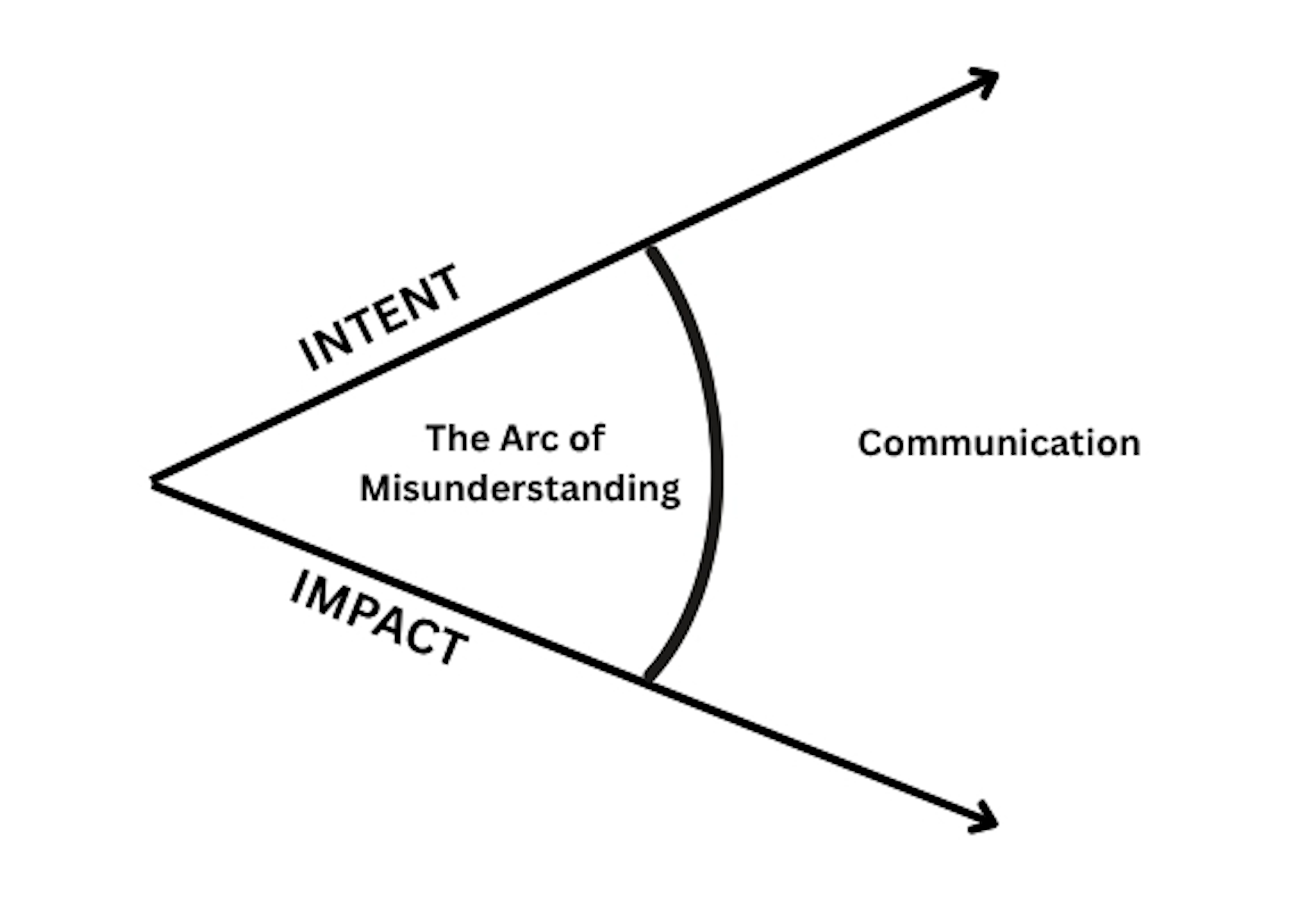Intent vs. Impact: The Leadership Gap We All Navigate
I had one of those conversations recently where I left thinking, “That didn’t go the way I thought it would.”
As it happened, just days before that, I’d been introduced to a framework at a leadership offsite by a gifted facilitator. It was about the persistent gap between what we mean and how it lands with another person - the gap between intent and impact. I hadn’t expected to draw on it so quickly!
The Subjective Reality of Every Interaction
Here’s what I’m coming to understand:
Intent is my subjective experience of my words and actions.
Impact is your subjective experience of my words and actions.
And the space between them is what our facilitator referred to as ‘the arc of misunderstanding’. And that is where so much leadership friction lives.
As Amanda Ripley observes in her excellent book ‘High Conflict: Why We Get Trapped and How We Get Out’:
“We all suffer from the illusion of communication… We lack empathy for what it is like to be outside our own heads.”
(Side note: I highly recommend the audiobook version of Ripley’s book, with recordings of real-life conflicts, including a very controlled but tense exchange between an astronaut and Mission Control!)
Ripley’s line has always resonated with me because I recognise myself in it. How often do I assume that my intent is obvious to others? How frequently do I expect people to undersand not just my words, but the context and reasoning behind them?
Putting an Awareness of the Gap Into Practice
Having just been introduced to this helpful framework, I realised that I had literally just made that exact mistake in my exchange with a colleague. But having that new language meant I was able to follow up and employ the tool that can work to close the gap - communication.
In this instance, I was able to go back and apologise, explaining that while my intent in the conversation was x, and the context for that was y, I could now see how the impact on her was z, and I was genuinely sorry for that, and in future would approach it differently.
In light of that, we were able to cooperatively identify the best way forward that accounted for both her priorities and mine.
The Reality of Being Human
This experience highlights something fundamental. There is something that is true for every single one of us in leadership roles -
You are a human being. And everyone you work with is a human being.
And every human being comes with their own filters, blindspots, background, priorities, and perspectives.
Which means that it is always possible that in any given interaction, intent may come out very differently from person A than from person B. Similarly, the impact it has on the other person may land very differently for person C than for person D.
Which means - the arc of misunderstanding is usually going to be bigger than we expect. And therefore, communication is usually more needed than we think.
Analysing our Own Impact Experience
On the other side of the equation, we each need to retain an openness to consider that the impact we experienced wasn’t the impact that was intended.
In the same few days following the offsite, I also had an opportunity to apply this model from the other side.
Following an exchange, I was left feeling not so great about myself, based on what I perceived to be the subtext of a conversation.
However, using the same Intent-Impact concept, I was able to process the exchange and ask myself if the impact I was experiencing was perhaps not at all the intent of the person who had been speaking. I realised that, in fact, it was entirely possible that the exchange had nothing to do with that at all.
A Helpful Practice
What strikes me about this framework is how it shifts responsibility from defending to understanding.
Instead of proving my good intentions, I can focus on understanding the impact I created and how best to move forward from there.
Likewise, instead of assuming negative motives or unquestioningly adopting as truth my initial feelings from an interaction, I can dig deeper to consider their intent.
None of this, obviously, means accepting harmful actions or dismissing our own feelings. It certainly doesn’t mean accepting gaslighting about clearly unacceptable behaviour or comments.
Rather, it means separating what was intended from what was experienced, so we can question, understand, and address both more effectively.
Still Learning
I’m still working on this, but I am finding that this is an incredibly helpful and practical model. And I’m beginning to see how much energy gets wasted in the space between intent and impact when we don’t acknowledge that space exists. How many conflicts could be shortened, relationships strengthened, and solutions found if we acknowledged that in any interaction, we are both coming from ‘inside our own heads’.
The next time we find ourselves in one of those conversations that didn’t go as intended, perhaps it’s worth asking:
What was my experience?
What might theirs have been?
And what would it look like to communicate across that gap?
After all, we’re all trying to connect across the space between our inner world and others’ - and maybe acknowledging that challenge is the first step towards bridging it more effectively.
